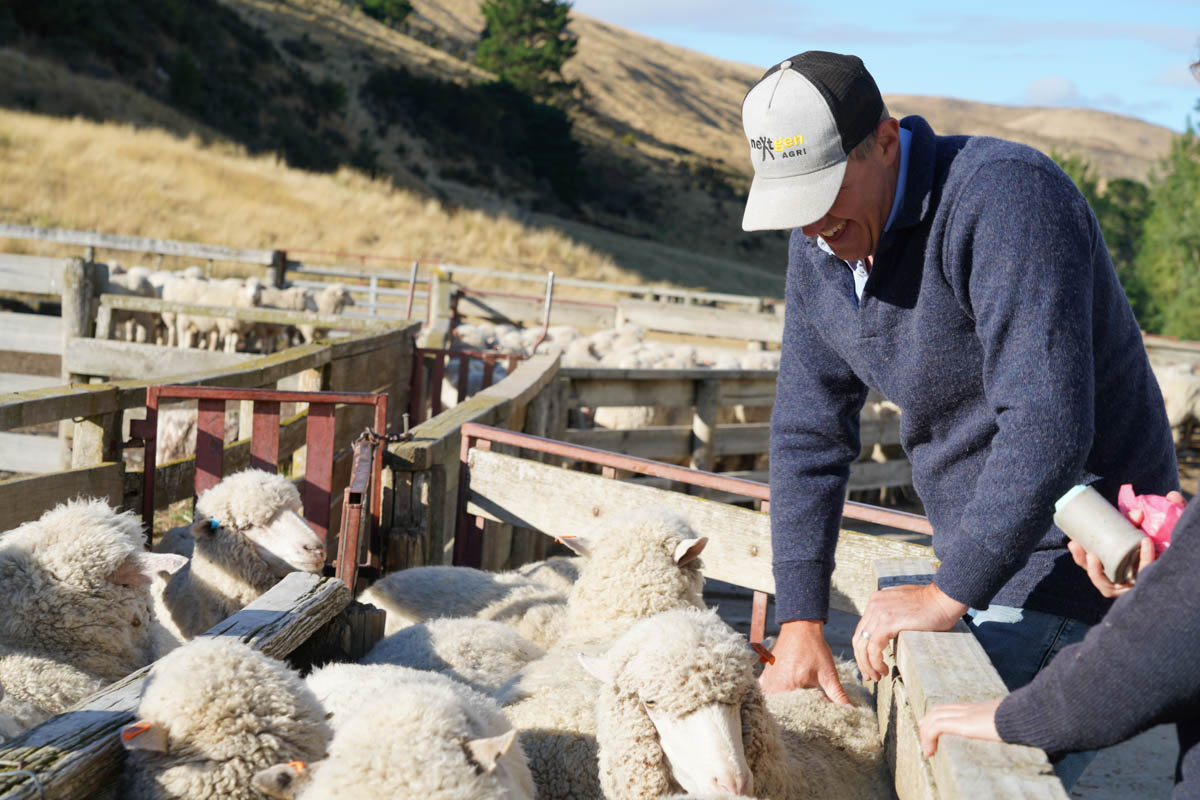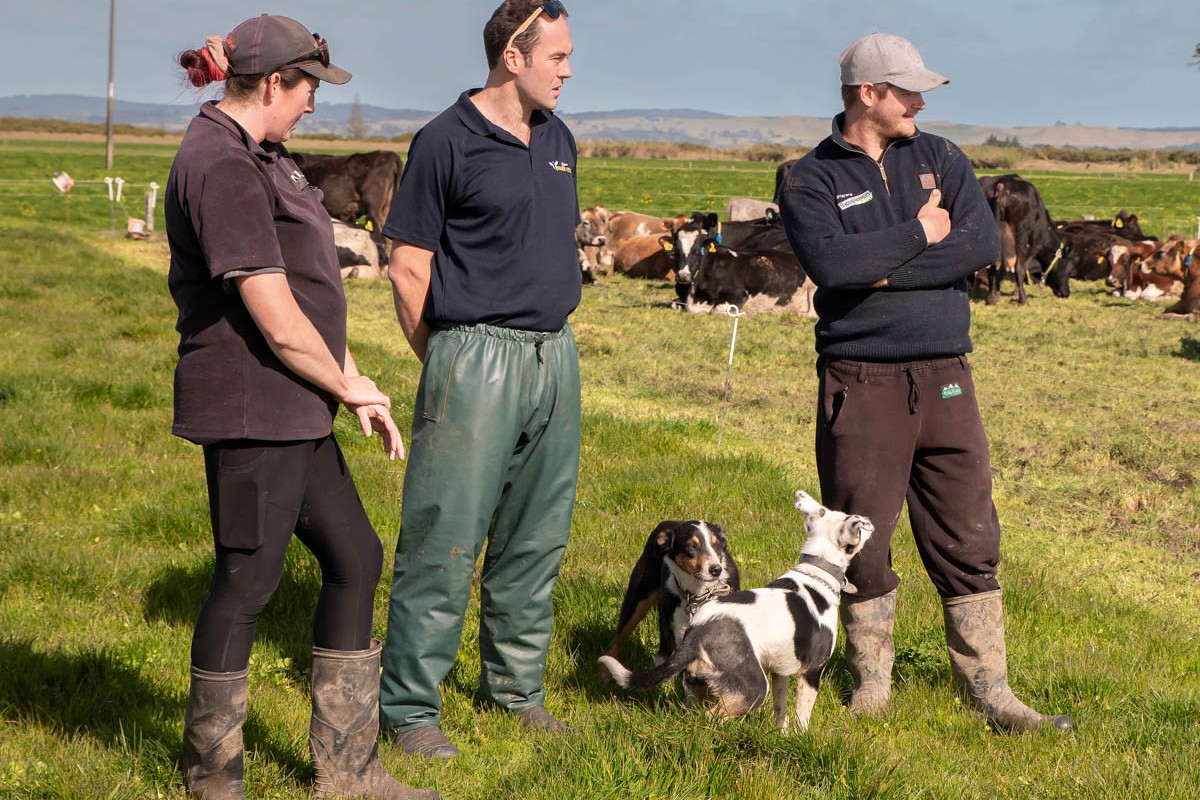Tailing can be a good opportunity to deal with other health issues in lambs, but as Joanna Grigg discovered, it pays to think carefully about what is done and when.
With lambs heading beyond $120 by weaning, it is tempting to give them the full royal treatment at docking time. Options to consider at docking are supplementing lambs with B12 or selenium, a clostridial vaccine and spraying on fly protection.
To avoid wasting money on treatments that aren’t needed, base the animal health plan on what was provided to pregnant ewes, the status of last year’s lambs over summer, soil fertility and climate predictions.
John Smart, a veterinarian at Clutha Vets, says monitoring the flock during the year will help farmers decide what to spend their money on and to see the big picture.
“To establish the pattern of B12 levels in your flock, test lambs in late summer.
“Generally giving B12 at tailing is a good investment for lambs in Southland and Otago but it comes down to the natural cobalt in the soils.”
Cobalt is essential for the synthesis of vitamin B12 in the rumen but it is not transferred across the placenta. Vitamin B12 is important for energy and protein metabolism. B12 can be given as a long-acting injection subcutaneously, in the neck region, at docking or weaning. Smart says lambs don’t really need B12 at tailing time but they do before weaning, so tailing is a convenient time to do it.
To save money, farmers can give a half ml dose at tailing, then another half ml to the lambs still on the farm in February, he said. Dosing with one ml means some of the lambs will be killed before the B12 is used up.
“A one ml dose will last eight months but it does increase the cost as those earlier lambs which go to the works have unused B12 sitting in them.
“Another option is to give a three-quarter ml dose.”
If ewes are supplemented with selenium, lambs should be adequate until their first drench. If ewes were not treated with selenium pre-lamb and/or there are visual signs of white muscle disease in lambs, then it may pay to treat with selenium/vitamin E at docking. A dose of one mg Se/kilogram of liveweight should have efficacy for at least 10 months.
“If farmers are concerned, another good option is to spread prills on pasture,” Smart says.
Spraying on fly control at docking should be guided by the fly pressure expected over the season.
“In the last two seasons we have seen higher flystrike pressure in Southland, and we usually don’t do fly control at tailing.”
A clostridial vaccine to lambs at docking will provide protection from diseases like pulpy kidney.
“Most ewes will have had a clostridial vaccine pre-lamb but farmers may need to vaccinate lambs at tailing if they have started to see deaths to pulpy kidney pre-weaning.
“It is happening earlier now; maybe it’s the higher sugar diet?”
Whatever the supplements at tailing/docking, the royal treatment should involve minimal lamb and ewe separation, management to avoid smothers in the yard, clean and working tools and time for lambs to mother-up before dark.
Avoid drench at docking
Don’t make a knee-jerk decision to drench ewes based on a few dags or a green scour at docking. Drenching all ewes at docking with an oral drench has been shown to accelerate drench resistance.
John Smart, from Clutha Vets, says drench is a precious resource and dagging by drenching is not sustainable.
“Green scours or dags may be because of fresh green grass and there are always some worms cycling through the ewes at this time.”
Egg counts peak during mid-lactation in ewes as their immunity comes under pressure. But by weaning the ewe’s immunity has usually recovered and egg counts have returned to normal.
The productive impact of a worm burden at docking time is usually minimal and lamb growth via lactation is often unaffected.
Smart praises the benefits of ‘vitamin G’, ie. grass, to reduce parasite effects on ewes.
Well-fed ewes can tolerate parasite challenge more readily. Research at Lincoln University (Tambunan, Logan, Bywater and Greer) showed that giving twin-bearing ewes half a kilo of pellets in early lactation reduced ewe faecal egg count by 50% from week six onto weaning. This shows feeding ewes better in the first four weeks of lactation helps reduce their faecal egg counts. However, it was not a sufficient enough drop to keep pasture contamination to a point where lambs were better protected from parasitism.
One reason to consider drenching ewes at docking is if a long-acting anthelmintic was given pre-lamb and it’s time for an exit drench.
“Often it is still too early for an exit drench though,” Smart said.
Wormwise states that pre-lamb drenching of ewes has produced variable production responses in published trial work and recommends ewes should not be drenched.
Lambs do not require a drench at tailing in general. Lambs docked at four weeks are too young to have parasites circulating and, as a rule it is a waste of time, Smart said.
“I’d only consider it if tailing is pushed out to eight weeks for some reason.”
Farms with identified over-wintering of Nematodirus may need to drench lambs about three weeks pre-weaning. These tough larvae can over-winter in their shell and transmit themselves as larvae to new lambs. Sudden outbreaks of clinical disease can occur in lambs before weaning.
The hatchability of eggs passed by lambs is higher than eggs passed by ewes, so pastures quickly become infected. Rather than drenching, cleaning up of infected pastures using cattle or by spelling are options.
A study of NZ sheep farmer’s parasite management (2005 survey) showed that about half of farmers either often, or always, return lambs back to the same pasture after weaning. Very few farmers indicated they always weaned lambs on to pasture not previously grazed by lambs and this only increased slightly for those who were able to wean lambs on to paddocks not grazed that season by lambing ewes. In the period from weaning until one year of age, more than half the farmers had ewes or cattle grazing the block before lambs returned to graze the pasture. Grazing with cattle was slightly more common than ewe grazing.
THE ROYAL TREATMENT AT DOCKING
- Wait for dry weather
- Small mobs so minimal time off the ewe
- Clean and working gear
- Trained staff to avoid abscess from injection
- B12 now rather than wait to weaning
- If pulpy kidney seen pre-weaning last year, consider vaccine
- Use small pens and tie dogs outside the back pen, to reduce smothers
- Allow time to mother-up before dark




